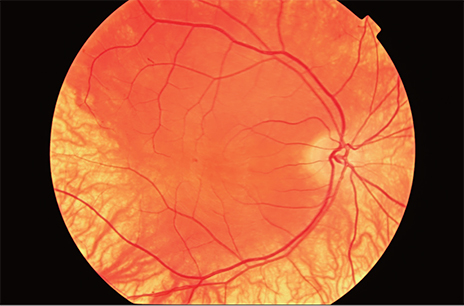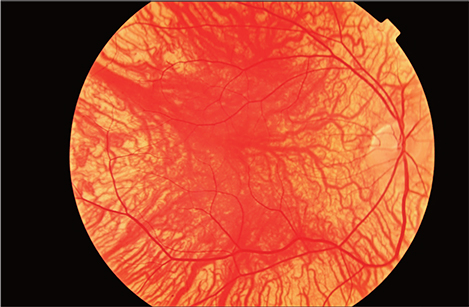Korean J Ophthalmol.
2013 Aug;27(4):308-310. 10.3341/kjo.2013.27.4.308.
Presence of Fusion in Albinism after Strabismus Surgery Augmented with Botulinum Toxin (Type A) Injection
- Affiliations
-
- 1Noor Ophthalmology Research Center, Noor Eye Hospital, Tehran, Iran. stavakkolizadeh@noorvision.com
- KMID: 1705431
- DOI: http://doi.org/10.3341/kjo.2013.27.4.308
Abstract
- It is commonly accepted that albino patients with strabismus rarely achieve binocularity and depth perception after strabismus surgery. The presence of retino-geniculo-cortical misrouting, a hallmark of the visual system in albinism, does not necessarily cause total loss of binocular vision, however, not even in albino patients with strabismus. Recently some degrees of stereopsis were reported in albinism patients with minimal clinical nystagmus, if any, in the absence of strabismus. It is possible that patients with albinism and strabismus have binocular visual potential which appears after strabismus correction and provides appropriate postoperative alignment in the long term. Here we present two cases of clinically diagnosed oculocutaneous albinism, an 18-year-old girl and a 16-year-old boy, both with exotropia > or =40 prism diopter, who gained acceptable alignment and fusion after surgical correction of their strabismus as demonstrated on Bagolini testing. In cases of albinism accompanied by visual pathway abnormalities and strabismus, binocular visual potential is not impossible, and some levels can be expected. Thus, these patients, like other cases of strabismus, may benefit from treatment of strabismus at an earlier age to achieve appropriate alignment, cosmetic satisfaction, and a possibly increased chance of fusion.
Keyword
MeSH Terms
-
Adolescent
Albinism, Oculocutaneous/*drug therapy/*surgery
Botulinum Toxins, Type A/*therapeutic use
Combined Modality Therapy
Female
Humans
Male
Neuromuscular Agents/therapeutic use
Strabismus/*drug therapy/*surgery
Treatment Outcome
Visual Pathways/drug effects/surgery
Botulinum Toxins, Type A
Neuromuscular Agents
Figure
Reference
-
1. Lee KA, King RA, Summers CG. Stereopsis in patients with albinism: clinical correlates. J AAPOS. 2001; 5:98–104.2. Boyle NJ, Dawson EL, Lee JP. Benefits of retroequatorial four horizontal muscle recession surgery in congenital idiopathic nystagmus in adults. J AAPOS. 2006; 10:404–408.3. Hertle RW, Anninger W, Yang D, et al. Effects of extraocular muscle surgery on 15 patients with oculo-cutaneous albinism (OCA) and infantile nystagmus syndrome (INS). Am J Ophthalmol. 2004; 138:978–987.4. Shiono T, Tsunoda M, Chida Y, et al. X linked ocular albinism in Japanese patients. Br J Ophthalmol. 1995; 79:139–143.5. Apkarian P, Reits D. Global stereopsis in human albinos. Vision Res. 1989; 29:1359–1370.6. Cobo-Lewis AB, Siatkowski RM, Lavina AM, Marquez LC. Poor stereopsis can support size constancy in albinism. Invest Ophthalmol Vis Sci. 1997; 38:2800–2809.7. Ozkan SB, Topaloglu A, Aydin S. The role of botulinum toxin A in augmentation of the effect of recession and/or resection surgery. J AAPOS. 2006; 10:124–127.8. Osako M, Keltner JL. Botulinum A toxin (Oculinum) in ophthalmology. Surv Ophthalmol. 1991; 36:28–46.
- Full Text Links
- Actions
-
Cited
- CITED
-
- Close
- Share
- Similar articles
-
- Recession-Resection Surgery Augmented with Botulinum Toxin A Chemodenervation for Paralytic Horizontal Strabismus
- The Complications of Botulinum Toxin Type A Chemodenervation in Strabismus
- The Effect of Botulinum Toxin Chemodenervation in Chronic Paralytic Strabismus
- Result of Initial Botulinum Toxin Injection in Childhood Horizontal Strabismus
- A clinical study on the use of botulinum toxin type a in maxillofacial area





